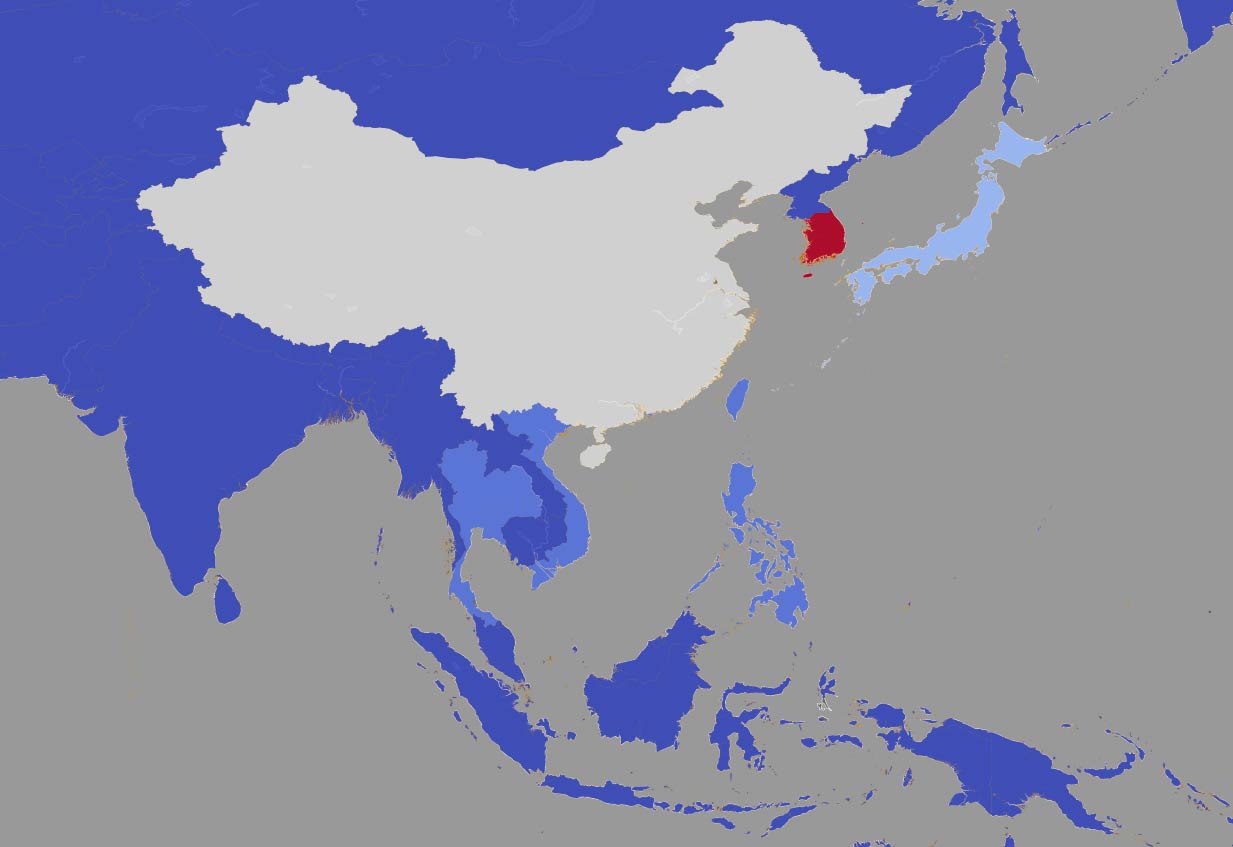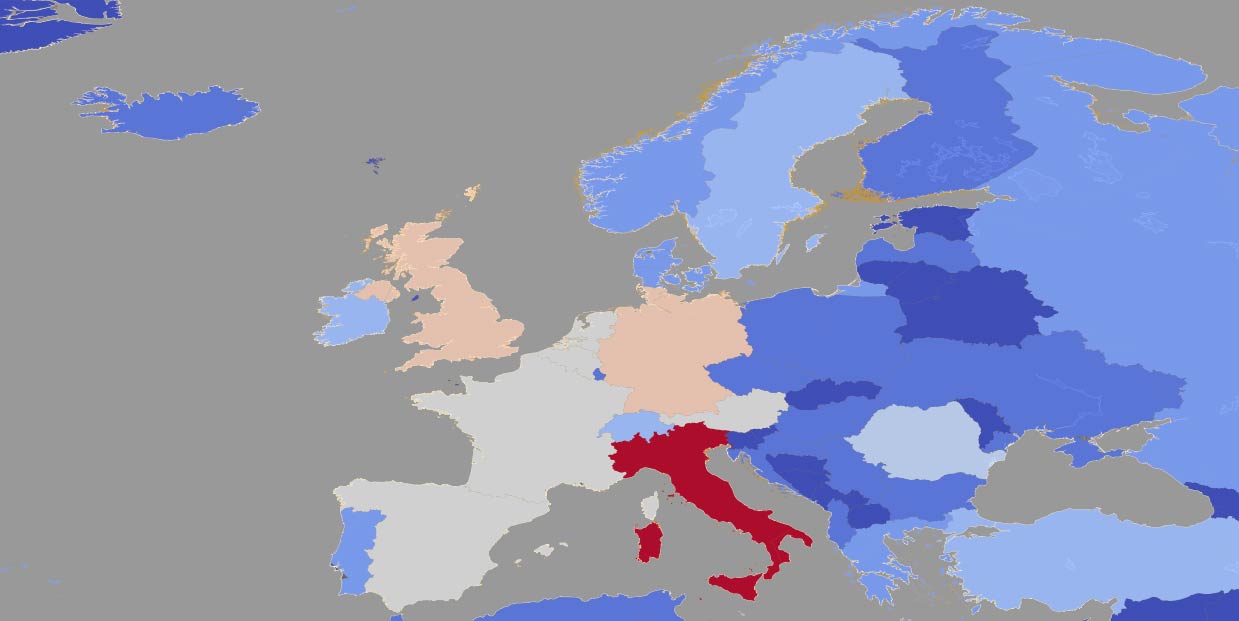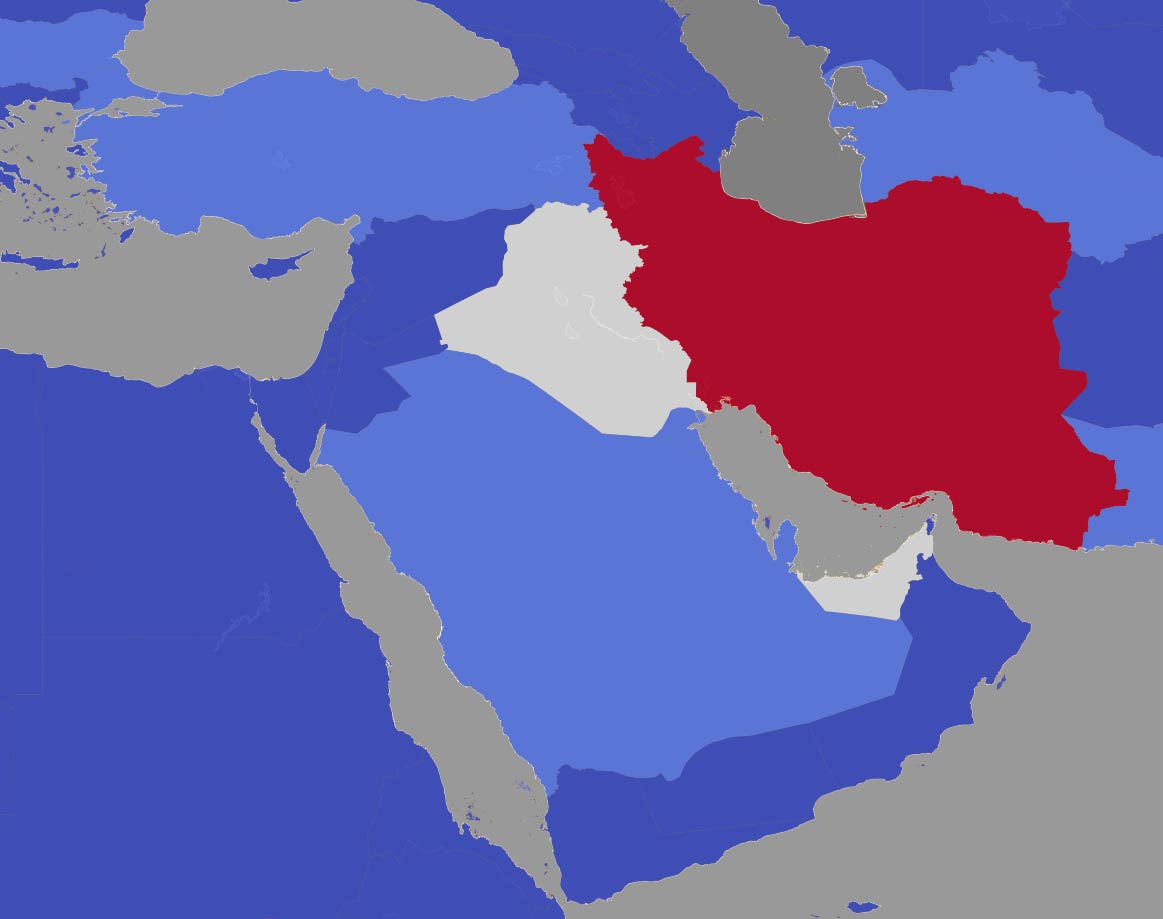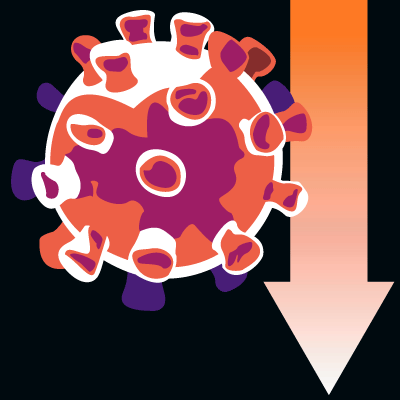Events are unfolding rapidly in the global spread of the SARS-CoV2 virus, which causes the coronavirus disease 2019 (COVID-19). Since COVID-19 cases were first identified in Wuhan, China in December of 2019, it has spread to many countries around the world, with ongoing outbreaks in Japan, South Korea, Iran, and Italy, as well as isolated cases in some other countries. The situation continues to change rapidly.
The Study
To evaluate the potential of cases in other countries, we used the AIR pandemic model to run hypothetical scenarios. In these scenarios, we simulated the spread of disease based on the latest reported number of cases in the countries outside China with the highest number of cases—South Korea, Italy, and Iran with 2033, 650, and 245 reported cases, respectively, as of February 28. What we observed in these countries was an abrupt rise in the reported number of severe cases, which implies the existence of clusters before public health officials became aware of them.
The prime assumption in these scenarios is that by the time a country starts to act against the further transmission of diseases, cases have already been exported to other countries. Air travel enables large numbers of people to travel internationally quickly. Based on the daily pattern of travel between airports, we can develop a list of countries with a higher probability of having imported cases from the source countries.
Our analysis of risks associated with the current outbreaks in South Korea, Italy, and Iran, highlights the following countries at highest risk for onward infections from these secondary outbreaks.
For South Korea:
- Japan
- United States
- Vietnam
- Thailand
- Philippines
- Taiwan
For Italy:
- Germany
- United Kingdom
- Spain
- France
- Netherlands
- Belgium
- United States
- Romania
For Iran:
- United Arab Emirates
- Turkey
- Iraq
- Qatar
- Germany
- Kuwait
- Italy
Figures 1 to 3 examine the probability of (re)introduction of COVID-19 cases from South Korea, Italy, and Iran (the country with highest number of reported cases outside China) to other countries before the introduction of air travel restrictions 21 days after the infection of index cases in the country of origin. In each map, the country of origin is shown in red and the destination countries are shaded according to the probability of (re)introducing COVID-19, with lighter colors indicating a higher probability.



Notably, Turkey is one country in which there have not been confirmed cases of onward transmission from Iran, but in which they might be expected.
The Bottom Line
As we expected, for each country that we examined, its neighboring countries have a higher probability of transmission compared to the rest of the world. And since these countries are in different regions of the world, the probability of direct or indirect transmission of the disease to additional regions is more probable.
The examples given in these maps show the importance of models in providing insights to public health officials, (re)insurance companies, and corporations to help them make informed decisions about the current epidemic of novel coronavirus. We expect to see this pattern of transmission repeat across the globe in coming days. During situations when there are limited resources available, such analyses can help with prioritizing the allocation of resources to regions and prevent the further spread of the disease.
For a study of a potential influenza pandemic read “Global Pandemic Megadisaster—Are You Prepared?”



